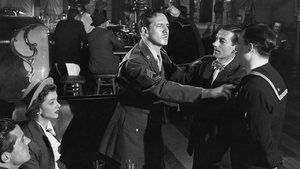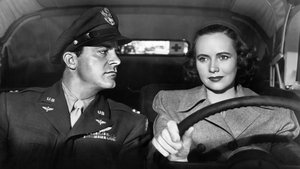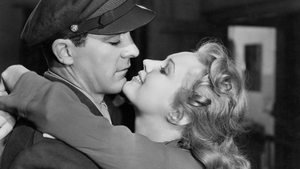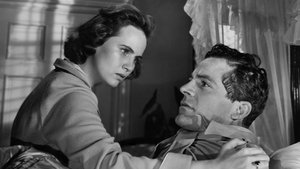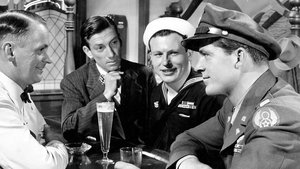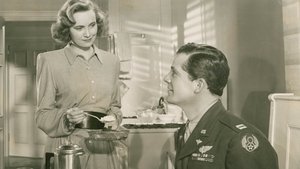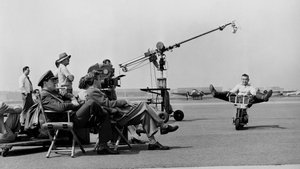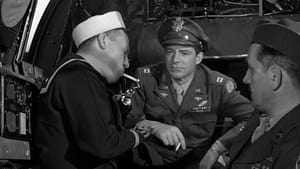Video Sources 0 Views
- Watch trailer
- The Best Years of Our Lives

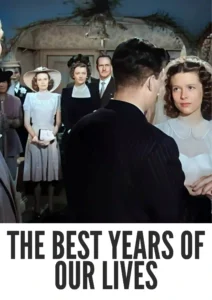
Synopsis
Table of Contents
ToggleA Nation’s Homecoming: The Best Years of Our Lives (1946) in Vibrant Color

Relive the poignant journey of veterans returning home after World War II with The Best Years of Our Lives, a powerful drama from 1946, now beautifully colorized to enhance its emotional depth. Directed by William Wyler, this film masterfully portrays the challenges and triumphs of readjusting to civilian life. Perfect for those who appreciate historical dramas and compelling human stories, this HD download offers a timeless and deeply moving cinematic experience. Also known as Glory for Me, this movie is not one to miss.
The Best Years of Our Lives Storyline: Coming Home is Just the Beginning
The Best Years of Our Lives tells the story of three American servicemen—Al Stephenson (Fredric March), a former bank executive; Fred Derry (Dana Andrews), a former soda jerk turned bombardier; and Homer Parrish (Harold Russell), a young sailor who lost both hands in combat—as they return to their hometown of Boone City after the war. Each man faces unique challenges as they try to reintegrate into their old lives.Al struggles to reconnect with his wife and children while grappling with the moral compromises he observes in the banking industry. Fred finds his pre-war job unfulfilling and his marriage to Marie quickly dissolving, leading him to question his future. Homer deals with the physical and emotional scars of his injuries, fearing he will be a burden to his fiancée, Wilma.As the three men navigate these difficulties, they find solace and support in their shared experiences. The film explores themes of love, loss, and the search for meaning in a post-war world, offering a poignant and realistic portrayal of the challenges faced by returning veterans. Ultimately, The Best Years of Our Lives is a moving tribute to the resilience of the human spirit and the importance of community.
Movie Cast
The film features a stellar cast of actors who bring these complex characters to life:
- Fredric March as Al Stephenson
- Myrna Loy as Milly Stephenson
- Dana Andrews as Fred Derry
- Teresa Wright as Peggy Stephenson
- Harold Russell as Homer Parrish
Movie Genre
The Best Years of Our Lives falls into the genre of post-war drama, with elements of romance and social commentary that are characteristic of the era. Its realistic portrayal of veterans’ experiences and its exploration of societal issues make it a timeless and relevant film.
Historical Context: Post-War America and the Movie
Released in 1946, The Best Years of Our Lives reflects the social and emotional landscape of post-World War II America. The film addresses the challenges faced by returning veterans as they attempted to reintegrate into civilian life, including issues such as unemployment, housing shortages, and psychological trauma.The film was produced during a time of significant social change, as American society grappled with the aftermath of the war and the transition to a peacetime economy. The Best Years of Our Lives resonated with audiences because of its honest and compassionate portrayal of these issues, earning critical acclaim and commercial success. It won seven Academy Awards, including Best Picture, Best Director, and Best Actor for Fredric March.
Colorization Details
This colorized version of The Best Years of Our Lives has been meticulously restored using modern digital techniques, enhancing the visual appeal while preserving the film‘s original emotional impact. The colorization process involved carefully analyzing the grayscale tones of the original black and white footage and assigning appropriate colors to each scene. While the specific software used remains proprietary, the techniques employed included advanced algorithms for color palette selection and image enhancement.This painstaking process brings new life to the characters and settings, making the story even more engaging for modern audiences. While some may debate the merits of colorizing classic films, it introduces these films to a broader audience, ensuring their legacy for future generations.
Technical Details
- Director: William Wyler
- Screenplay: Robert E. Sherwood
- Based on: Glory for Me by MacKinlay Kantor
- Cinematography: Gregg Toland
- Edited by: Daniel Mandell
- Production Company: Samuel Goldwyn Productions
- Distributed by: RKO Radio Pictures
- Runtime: 170 minutes
Technical Specifications
- Download Format: MP4
- Resolution: HD (1080p)
- Compatibility: Compatible with most devices, including smartphones, tablets, computers, and smart TVs.
Reviews and Critical Reception
The Best Years of Our Lives is widely regarded as one of the greatest films ever made, celebrated for its powerful storytelling, realistic characters, and poignant themes. The film received widespread critical acclaim upon its release and has continued to be praised for its enduring relevance and emotional impact.The film’s unflinching portrayal of the challenges faced by returning veterans resonated with audiences and critics alike, earning it numerous awards and accolades. The Best Years of Our Lives remains a landmark achievement in American cinema, offering a timeless and deeply moving reflection on the human experience.
FAQs
- Q: What is The Best Years of Our Lives about?
- A: The Best Years of Our Lives tells the story of three veterans returning home after World War II and their struggles to readjust to civilian life.
- Q: Is The Best Years of Our Lives (1946) a well-known movie?
- A: The Best Years of Our Lives is considered one of the greatest films ever made, known for its powerful storytelling and emotional depth.
- Q: Is this version of The Best Years of Our Lives colorized?
- A: Yes, this version has been professionally colorized to enhance the viewing experience.
- Q: What makes The Best Years of Our Lives so highly regarded?
- A: The Best Years of Our Lives is praised for its realistic portrayal of veterans’ experiences, its poignant themes, and its stellar cast.
- Q: What is the download format?
- A: The download format is MP4, which is compatible with most devices.
- Q: What resolution is the download?
- A: The resolution is HD (1080p), providing a high-quality viewing experience.
Download Now in HD!
Watch The Best Years of Our Lives Today!
